A three part article, on the HR & CE Department of the Govt. Tamilnadu. Read Part 1 here . This is Part 2.
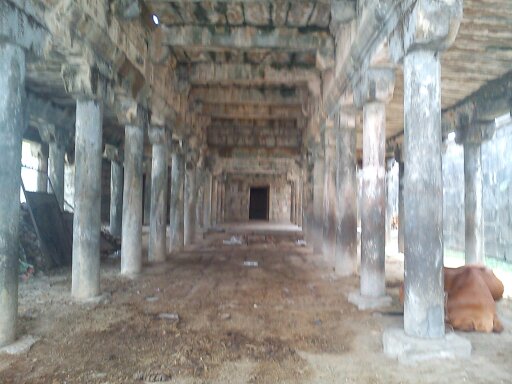
HR & CE Dept. officials carry out of a lot of illegal activities in temples and other religious institutions. Most of their orders replacing Trustees or interfering in temple matters are without jurisdiction or in abuse of it. The general impression of Hindu devotees is that these officials have the power under law to do such acts. Nothing can be farther from truth. Every Hindu Devotee should be aware of the following facts:
(1) HR&CE Dept. or Government cannot appoint Executive Officers to any religious institution without valid reasons and without following natural justice:
As per the Supreme Court’s judgment in the Velur Devasthanam Case 1965 SCR (2) 934, a case must be always made out for an appointment of an Executive Officer. Government or HR & CE Department or even Courts cannot appoint Executive Officers without strong justification. This is the position in the case of non-denominational temples. In case of denominational temples like Chidambaram Shri Sabhanayagar Temple, the HR & CE Dept. has no rights at all, in view of the special status accorded to denominations by Article 26 of the Constitution and by Sec. 107 of the HR & CE Act.
Further, the Commissioner or the Department need to follow the principles of natural justice while seeking to appoint an Executive Officer and failing to do so would invalidate the appointment. This has been the dictum of a Division Bench of Hon’ble Madras High Court in D. Nagarajan vs. Commissioner, HR & CE AIR 1971 Mad 295.
(2) General Policy or “Better Management” cannot be reasons for takeover of temple administration: HR&CE Dept. cannot appoint Executive Officer to any religious institution stating it is Government policy to appoint Executive Officers for most temples. Better or efficient management too cannot be reasons for takeover of temples from the Trustees.
(3) Executive Officer can be given powers only to look after the properties of the temple. He cannot interfere in religious matters or other matters of administration: Even in cases where Courts have approved the appointment of Executive Officer due to presence of mismanagement in the religious institution, the Commissioner can give powers pertaining only to the properties of the temple or institution to the Executive Officer. No other powers, administrative or religious can be assigned to the Executive Officer.
(4) Executive Officer’s office premises should not be within the temple premises: As per rule 8 of the Temple Entry Authorization Act, 1947, “the temple buildings and premises shall not be used for purposes not connected with or arising from the worship, usages and observations of such temples”.
(5) Any notice issued by the HR & CE Dept. appointing Executive Officer should state the reasons for appointment and should provide reasonable opportunity to reply or refute the notice.
(6) Executive Officer or any other HR & CE official cannot introduce innovations concerning the time, place or mode of worship in the temple or stop or discontinue any religious practice followed in the temple.
(7) Executive Officer has no authority to fix archana or darshan charges: This may come as a surprise to many but it is only the Trustee or Trustees who can fix these charges and not the Executive Officer or any other official in the HR & CE.
This is as per Sec. 57 of the HR & CE Act, 1959.
Frauds committed by HR & CE in appointing Executive Officers to Hindu Religious institutions
In 1970, a division bench of the Hon’ble High Court of Madras came down heavily on the practice of HR & CE in not following natural justice while appointing an Executive Officer for a temple. If one imagined that the Department would have corrected itself and adhered to the principles of natural justice after this judgment one could not be more wrong.
To this day, the practice of the HR& CE is to begin by issuing “an order” appointing an Executive Officer to a religious institution.
If the institution receiving the “order” does not seek any legal remedy, the Executive Officer takes over immediately. If the Trustees file a suit or writ against the arbitrary takeover attempt, HR&CE would state in the Court that this memorandum can be treated as a notice and the trustees can reply to it. Trustees and institutions naïve enough to fall for this stratagem would accept this in the Court and start replying to the HR & CE Dept to the “notice”. HR&CE Dept. would usually pass a “final order” appointing an Executive Officer while the purported “enquiry” is still on.
If the trustees file a case against this “final order”, HR&CE Dept’s stand in the Court would be that there is an alternate remedy available to the petitioners by way of review petition to the Government. Courts usually are inclined to tell the petitioners to avail this alternate remedy, which in reality is no remedy at all as the Government is known to uphold all the illegal and unethical orders of the HR&CE Dept.
There have been instances in recent times where HR &CE officials, demanding bribes to cancel takeover proceedings, were arrested.
In 2009 a Joint Commissioner of HR & CE Dept was caught accepting bribes for this purpose.
Commissions and Omissions
HR & CE Dept. claims it is administering only the secular aspects of Temple Administration and ensuring that the moneys due to the institution are realized and used for the purposes for which the endowments were made. Lofty sounding, but if one were to analyse what really happens in the temples administered by this rogue department one would find corruption and looting not found even in traditionally corrupt Government departments.
Temple Properties
Temples and Mutts in Tamil Nadu own 500,000 acres of agricultural and other lands. The tenancy laws in Tamil Nadu and the non-functioning Revenue Courts make it almost impossible for landowners to realize any rent or revenue from the leased lands. The HR&CE Dept., which is hand in glove with the Government, takes no credible action to realize these rents or arrears of rents. The Dept. gave a shocking reply to a recent query under the RTI Act that it has no records of the ageing arrears or amount due to the temples. This admission alone is enough to boot out this rogue department from the temples.
Temples in Tamil Nadu also own about 22000 buildings and about 33,000 sites. These buildings and sites are leased out at values much below the market value. The corrupt HR & CE officials and Tamil Nadu Government officials and Ministers pocket huge sums for favouring leaseholders. These buildings are also leased out to non-Hindus especially Christian missionaries and charities which carry out their anti-Hindu activities from these places. This is against the intent and dictum of the people who had donated these places to the temples.
Huge corruption money flowing out of such transactions is the main reason Government does not want to give up its hold on Hindu Temples and institutions. Highly inflated project costs are another way by which HR & CE officials loot temple moneys. For example, Podu Dikshitars of Chidambaram had dismantled the Paniya Nayagam temple dedicated to Lord Subramanya, within the Chidambaram temple precincts, as the roof and pillars were bound to cave in due to loose soil in the basement. This was done as per advice of engineers and stapathis; a new construction plan drawn at a cost of Rs. 90 lakhs and work begun. The Executive Officer after assuming office in the Chidambaram temple stopped the sponsors from continuing the work. He has now given a proposal for the same work at a cost of Rs. 10 crores!
A luxury Toyota car was bought for Sri Maasaniamman Temple near Pollachi at a cost of Rs. 11.5 lakhs. The first question that comes to mind is why a luxury car is required for a temple. It has come out in newspapers and through RTI queries that this car was used for private purposes of the HR &CE Secretary in the Tamil Nadu government. It is also now known that the monthly petrol bills of this corrupt official were taken from Temple funds.
Funds accumulated in fixed deposits in the accounts of rich temples would suddenly be transferred for flood relief, tsunami or Chief Minister’s relief fund. Funds were repeatedly taken from Tiruverkadu Mariamman temple to conduct free marriages by the Tamil Nadu government. This temple which had huge deposits of money became almost bankrupt.
Temple Jewels
Since the HR & CE stopped having external audit from 1985, it is almost impossible to gauge how many antique and valuable temple jewels have been looted. There is widespread belief that valuable diamonds and stones in jewels have been removed and replaced by ordinary stones in many temples. Missing Maragatha lingams worth thousands of crores have not been recovered.
Jewels from 215 temples have been stolen and this rogue department does not even reveal the actual value of the jewels stolen. In many cases the loss of jewels is not known to the outside world at all.
On 22 December 2010, devotees discovered that about 156 globes made of gold and 108 globes made of silver, in the palanquins of the God and Goddess in the Perur Temple, were missing. This came to light only when the Golden and Silver palanquins were taken out in procession.
Temple Icons
More than 400 antique metal icons have been stolen from temples under the administration of the HR&CE department, which has not taken any credible follow up actions to recover the valuables. Instead of installing closed-circuit cameras, burglar alarms and modern safety locks, the Department keeps many icons belonging to various temples at one safe room in a big temple. These icons are thus deprived of poojas and maintenance. Continuous neglect of these icons can result in irreparable damage. Further, these sacred icons were meant for worship and this Department willfully ignores this primary purpose. While millions are wasted and looted by Dept. officials no care is taken to protect these treasures.
Festivals, etc
Another crime commonly perpetrated by the department officials is soliciting sponsors to celebrate festivals even for temples that have sufficient and surplus income. Two things are achieved in this manner. One, the unscrupulous officials are not called upon to show the incomes realized from specific endowments meant for such festivals. Soon the endowments or their existence would be soon forgotten and those properties can be sold or leased out for a pittance. Two, bribes can be taken from competing sponsors or accounts can be easily fudged when there are multiple sponsors.
Kapaleeshwar temple in Mylapore has many income generating properties. Still, the Department takes more than 80% of the money required for the Arupathi Moovar festival from sponsors who are given undue positions of importance during festivals ignoring devotees whose families and communities have contributed for generations.
Prasadam Stalls
Prasadam stalls are amongst the biggest frauds openly committed by this rogue Department. Only food prepared piously in the temple kitchen and offered to the deities in the temple in traditional manner can be termed as prasadam. However, Prasadam Stalls are auctioned by the Department (needless to say many improprieties are committed in these auctions and allotments) to the public and supposedly the stalls are allotted to the highest bidder. This means the Department openly allows third parties to produce food items to be manufactured outside the temple premises and packages them to be sold at temples. This is an act which is at once blasphemous and anti-religious besides being a huge fraud on devotees visiting the temple.
Besides, prasadam shops and stalls, other shops and commercial activities are permitted by the Department. These acts of the Department are detrimental to the serene atmosphere that needs to be maintained in temples and commercialises Hindu religious institutions.
Hundies
Hundies serve the Department in two ways. One, they generate income which the Department fails to realize from the properties of the temple it is administering. Two, they are the easiest source of income that can be looted. In most temples, the real amount generated by hundials is never accounted for. The only exception to this story is the tale of the Hundies illegally installed in Chidambaram Shri Sabhanayagar temple. At Chidambaram the Department is trying to prove a point by showing a big collection of hundie monies. In the first place, the Hon’ble Division Bench of Madras High Court in 1951 had clearly ruled that the Podu
Dikshitars are justified in not having any Hundie in the temple and further stated installing Hundies and introducing archana tickets commercialises the temple.
But after assuming office in the Chidambaram Temple, the Executive Officer came with a posse of policemen and installed Hundies in the temple that never had Hundies in its entire history. This is against the law, temple tradition, and in contempt of the Hon’ble High Court of Madras.
After installing Hundies, the Department did two things to ensure it is able to show good collection in the Hundies. It did not handover the second key of the Hundies to the Trustees and they do not seal the Hundies each time after they open it for counting.
When it was pointed out the Podu Dikshitars’ collection in gold and other valuables far exceed the Hundie collections even today, and the public have not contributed a single gram of gold to the Executive Officer like they do to the real owners of the temple, the Podu Dikshitars, about 4 gms of gold suddenly appeared among the hundie collections!
to be continued..
Shri.T.R.Ramesh is a banking professional and research scholar on Hindu religious affairs, and has pioneered the movement against Government control over temples, protection of temple assets, for almost 2 decades. He has filed number of cases against Governments against temple asset mismanagement, fighting for the rights of devotees.
President – Temple Worshippers Society.
President – Indic Collective Trust
This article in full was first published in Vijayavaani.com during 2011.



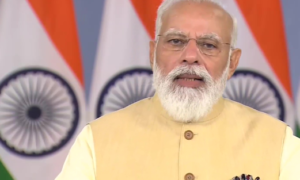

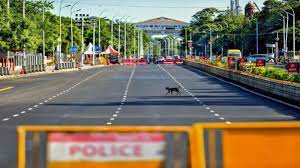







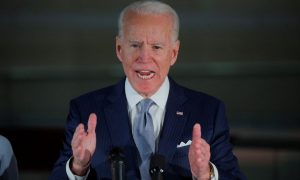





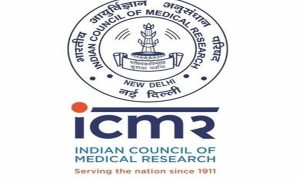





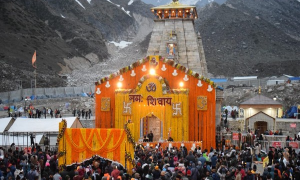

 WhatsApp us
WhatsApp us
Pingback: 토렌트 사이트
Pingback: สมัคร lsm99